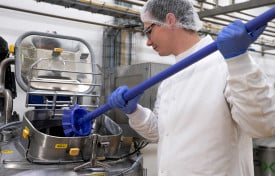Monthly Archives: March 2010

- March 25, 2010
Imagine a food processing plant without water. Sure there are some that are going as dry as possible to avoid microbiological problems, but for most water plays multiple roles in the manufacturing process. Well or city water for potable and non potable streams, make-up water for reconstituting ingredients, cooling water for heat exchangers, condensate (cow) water for soft rinse applications, water carrying permeate from UF units, water for cleaning chemicals and equipment rinses, effluent water to carry waste to treatment plants, laboratory water purified for various tests, potable water for personnel use. You get the picture – water is everywhere in a production operation.
Depending on use, however, each of these “waters” must have certain qualities.
- Is potable water chlorinated?
- Is the coliform count acceptable?
- Does it have heavy metals like copper or iron?
- Is the hardness softened for cleaning detergents?
- Is permeate clear indicating good UF performance?
- What is the conductivity of laboratory water or cow water?
- Are cleaning solutions sufficiently concentrated, acid, alkaline, or do sanitizing rinses have sufficient strength?
- What is the total solids, BOD, or COD of effluent?
These are just some of the variables which must be monitored when using water effectively in a processing plant.






